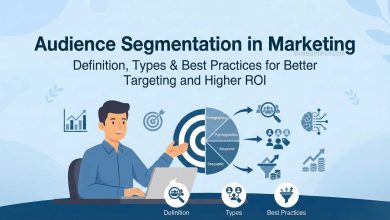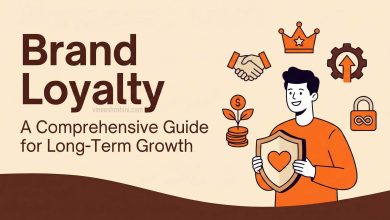Long-Form & Short-Form Content in Digital Marketing: Which Works Better? : A Comprehensive Guide 2025
Long-Form & Short-Form Content: Content marketing is a crucial aspect of digital strategy, and one of the most common debates is whether long-form or short-form content is more effective. Both types have their strengths and weaknesses, and the best choice depends on factors such as audience preference, search engine optimization (SEO), engagement, and marketing goals. In this article, we will explore the differences between long-form and short-form content, their advantages, and which one works best for different scenarios.
Table of Contents
What is Long-Form Content?
Long-form content typically consists of articles, blog posts, or guides that exceed 1,000 words. Some long-form pieces can be as extensive as 2,500 to 5,000 words. These articles are detailed, well-researched, and provide in-depth information on a particular topic.
Advantages of Long-Form Content
- Better SEO Performance – Search engines, especially Google, tend to favor long-form content because it provides comprehensive coverage of a subject, increasing its chances of ranking higher in search results.
- Increased Engagement – Readers who are looking for detailed information spend more time on long-form content, which improves user engagement metrics.
- Higher Shareability – Long-form content often gets more shares on social media because it provides value and is seen as an authoritative source.
- Boosts Authority and Credibility – When a brand consistently publishes in-depth content, it establishes itself as an industry leader and gains trust from its audience.
- Higher Conversion Rates – Detailed content allows for persuasive storytelling and effective call-to-actions (CTAs), leading to increased conversions.
Also Read: How To Make Money as a Digital Marketer : Comprehensive Guide 2025
Disadvantages of Long-Form Content
- Time-Consuming to Create – Writing and researching for long-form content requires significant effort and time.
- Requires More Attention from Readers – Not all users have the patience to go through lengthy articles, especially if they prefer quick answers.
- May Not Perform Well on Social Media – On platforms like Twitter or Insta, where content is consumed quickly, long-form content may not gain much traction.
What is Short-Form Content?

Short-form content is typically under 1,000 words and includes blog posts, social media updates, emails, and concise articles. The goal of short-form content is to provide quick, easily digestible information.
Advantages of Short-Form Content
- Quick to Produce – Short-form content takes less time to research, write, and publish.
- Better for Social Media – Platforms like Insta, Twitter, and FB favor short, engaging content that can be consumed in seconds.
- Easier to Retain Audience Attention – With shrinking attention spans, short-form content caters to readers who prefer quick information.
- Higher Engagement on Mobile Devices – Since mobile users typically browse on the go, short-form content is more suitable for their needs.
- Effective for Call-to-Actions (CTAs) – Short, direct messages work well for conversions like sign-ups, downloads, and purchases.
Buy Now : Professional Digital Marketing Course
Disadvantages of Short-Form Content
- Limited Depth and Detail – Short content does not allow for in-depth discussions, which can reduce its effectiveness for complex topics.
- Lower SEO Potential – Google tends to favor long-form content for informational queries, meaning short-form content may not rank as well.
- Less Authority and Credibility – Short posts may not establish the same level of expertise and trust as detailed, long-form content.
Comparison: Long-Form vs. Short-Form Content
| Feature | Long-Form Content | Short-Form Content |
|---|---|---|
| Word Count | 1,000+ words | Under 1,000 words |
| SEO Performance | Higher due to detailed content | Lower, but can still rank for specific queries |
| Engagement | Higher for in-depth readers | Higher for quick consumption |
| Social Media Performance | Lower, as it requires more attention | Higher, as it’s easy to digest |
| Credibility & Authority | Builds industry authority | Provides quick, but less authoritative information |
| Creation Time | Time-consuming | Quick and easy to produce |
| Best Use Case | Blogs, guides, in-depth articles | Social media, email marketing, quick blog posts |
Which Works Better?

There is no one-size-fits-all answer to whether long-form or short-form content is better. The right choice depends on several factors:
- Purpose of Content – If the goal is to provide in-depth knowledge, rank well on search engines, or establish authority, long-form content is the better choice. If the goal is to create quick engagement, boost social shares, or generate leads, short-form content is more effective.
- Target Audience – If the audience consists of professionals or individuals looking for detailed information, long-form content will work best. If the audience prefers quick updates or entertainment, short-form content is ideal.
- Marketing Channel – Long-form content performs well on websites, blogs, and LinkedIn, whereas short-form content excels on social media, email marketing, and mobile platforms.
- Industry Type – Industries like finance, technology, and healthcare benefit from long-form content, while industries like fashion, travel, and lifestyle can thrive on short-form content.
- SEO Strategy – If ranking on Google is a priority, long-form content generally provides better results. However, short-form content can still be useful for targeting specific keywords and engaging users quickly.
Conclusion

Both long-form and short-form content have their unique advantages, and the best strategy is often a mix of both. Long-form content is ideal for detailed information, SEO, and authority-building, while short-form content is excellent for quick engagement and social media. Businesses and content creators should analyze their audience preferences, marketing goals, and distribution channels to determine the right content approach. By leveraging both types of content effectively, one can maximize reach, engagement, and conversions in the digital landscape.
Keyword: Long-Form & Short-Form Content – Long-Form & Short-Form Content in 2025



